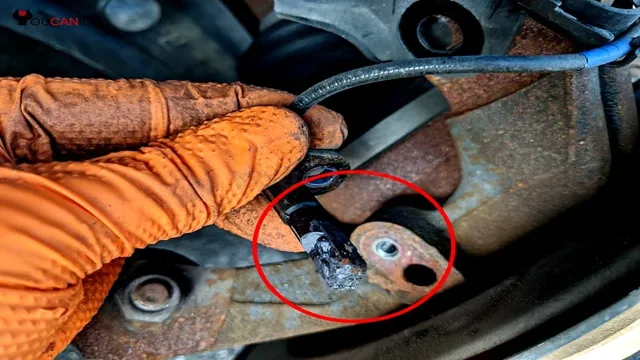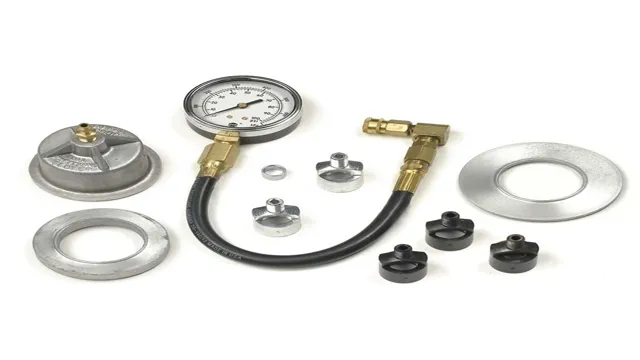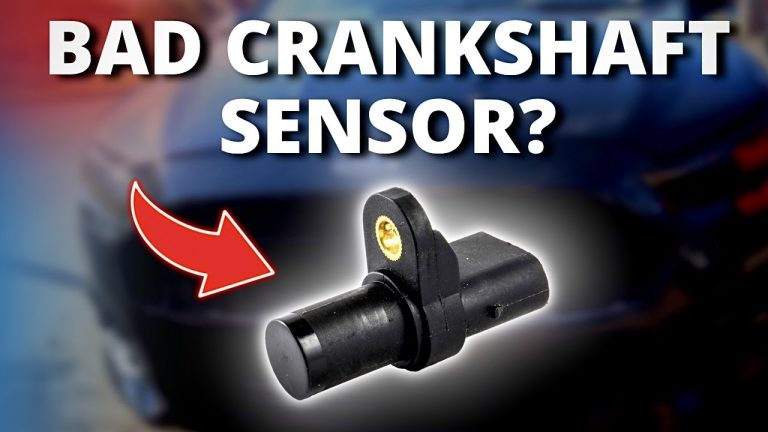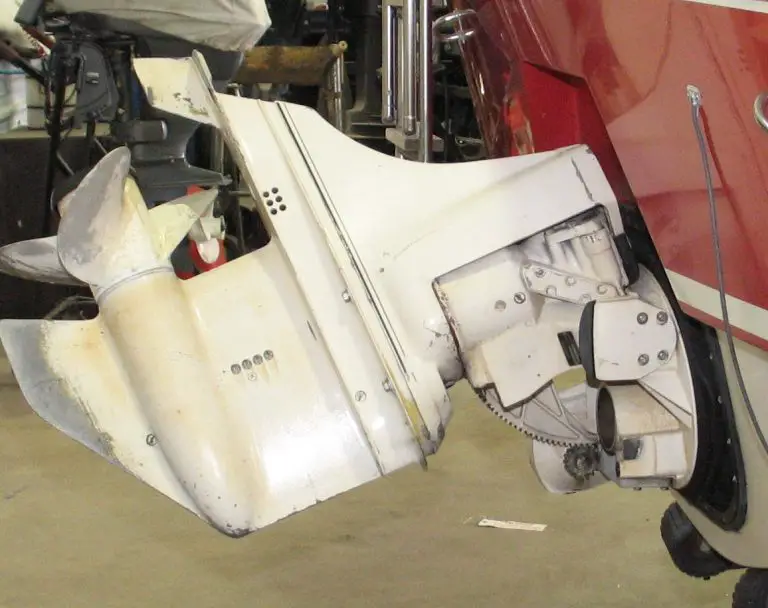Revive Your Engine: The Ultimate Guide on How to Fix a Spun Bearing Quickly and Effectively
If you’re experiencing an unusual knocking sound coming from your engine, it could be a sign of a spun bearing. A spun bearing can cause severe damage to your engine and ultimately lead to total engine failure if left unaddressed. It’s essential to fix a spun bearing as soon as possible, but it can be intimidating for many DIY enthusiasts.
Don’t worry; we’ve got you covered. In this post, we’ll walk you through the 12 steps involved in fixing a spun bearing, ensuring that you’re equipped with the knowledge and confidence to tackle this challenge head-on. From inspecting your engine to reassembling it, we’ll provide you with all of the necessary precautions and procedures to get your engine running smoothly again.
But first, let’s define what a spun bearing is. A bearing is a component located between the crankshaft and connecting rod that allows for proper rotation. When a bearing spins, the two metal surfaces rub against each other, causing wear and tear and ultimately, severe engine damage.
Most commonly, spun bearings occur due to a lack of oil lubrication or unbalanced engine components. We know engine repair can be daunting, especially if you’re not mechanically inclined. But our comprehensive guide can help you repair a spun bearing like a pro, saving you money on professional engine repair costs.
Follow along with our 12-step guide, and you’ll be well on your way to getting your engine back in good condition.
What is a Spun Bearing?
If your engine starts making a knocking or rattling sound, it could be a sign of a spun bearing. A spun bearing happens when the surface of the bearing that meets the crankshaft gets damaged or worn down to the point where it no longer rotates smoothly, causing metal-on-metal contact and a knocking sound. If left unaddressed, this can cause severe engine damage and even complete engine failure.
So, how do you fix it? Generally, fixing a spun bearing requires engine disassembly and replacement of the damaged bearing. It’s crucial to also identify the root cause of the problem to prevent it from happening again. Regular engine oil changes and maintenance can go a long way in preventing spun bearings from occurring in the first place.
If you suspect you have a spun bearing, it’s essential to get your engine checked by a professional mechanic. Ignoring the issue can lead to more costly repairs down the line, so it’s always best to address it sooner rather than later.
Explanation and Causes
A spun bearing is a serious engine problem caused by excessive wear and tear on a bearing. Bearings are small metal components that sit within the engine block and support the crankshaft. When these bearings become worn or damaged, they can spin out of their intended position.
This causes the crankshaft to rub against the engine block, resulting in significant damage. The most common cause of a spun bearing is lack of lubrication. When there is not enough oil in the engine, the bearings can become damaged and start to spin.
Additionally, high engine speeds, heavy loads, and aggressive driving can also contribute to bearing wear and lead to a spun bearing. If not addressed quickly, a spun bearing can cause severe engine damage and result in costly repairs. It’s crucial to maintain your engine’s oil level and follow a regular maintenance schedule to prevent this issue from arising.
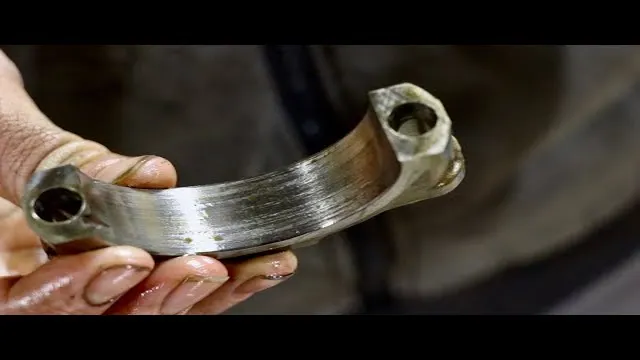
Signs of a Spun Bearing
If you’re experiencing strange noises coming from your engine or feeling vibrations, you may have a spun bearing. This can be a costly repair, but catching the issue early is crucial. Signs of a spun bearing include decreased oil pressure, knocking sounds, and overall engine failure.
Fixing a spun bearing involves disassembling the engine, removing the damaged bearing, and replacing it with a new one. However, it’s important to address any underlying issues that may have caused the bearing to spin in the first place, such as lack of lubrication or excessive heat. By keeping up with regular maintenance and addressing any issues promptly, you can prevent a spun bearing from causing extensive damage to your engine.
Symptoms and Diagnosis
If you’re experiencing a rattling sound coming from your engine, it could be a sign of a spun bearing. This occurs when the bearing, which helps to reduce friction between the crankshaft and connecting rod, becomes worn or damaged due to lack of lubrication or excessive heat. Other symptoms can include low oil pressure, metal shavings in your oil, and a decrease in engine performance.
To diagnose a spun bearing, a mechanic will typically perform a visual inspection and may also use special tools to listen for unusual noises or vibrations from the engine. If left untreated, a spun bearing can cause serious damage to your engine and lead to costly repairs. If you suspect you may have a spun bearing, it’s best to have your vehicle inspected by a professional as soon as possible.
Tools and Supplies Needed
If you’re facing the problem of a spun bearing, you’ll need a few tools and supplies to fix it. Some of the essential tools include torque wrenches of different sizes, sockets, an impact driver, pliers, and a breaker bar. You’ll also need a hydraulic press, sandpaper, and an engine cleaning solution.
Before diving into the repair process, ensure that you have the right replacement bearings for your engine. Once you have everything, start by removing the engine from the vehicle and disassembling the rotating assembly. Then, you can remove the damaged bearings and measure the bearing clearances.
Next, use a hydraulic press to install new bearings and reassemble the engine. After that, clean and lubricate the engine, and you’re all set. Remember, fixing a spun bearing can be a complex task, so it’s best to turn to a professional mechanic if you’re not sure about the process.
List of Necessities
If you’re new to DIY projects at home, planning ahead and having the right tools and supplies is essential. Here’s a list of necessities that will save you time and money in the long run. Firstly, invest in a good quality drill with a variety of bits.
This will be useful for hanging shelves, putting up curtains, and drilling pilot holes for screws. Secondly, get a utility knife, which will come in handy for cutting through materials like carpet, cardboard, and foam. Thirdly, acquire a sturdy tape measure to ensure precise measurements for all your projects.
Fourthly, invest in a set of screwdrivers with different sizes and types of heads, to make those household repairs a breeze. Lastly, purchase a pair of quality safety glasses to protect your eyes from debris and sawdust. These essential tools should suffice for most DIY projects at home, and will allow you to accomplish your tasks with ease.
Step-by-Step Guide to Fixing a Spun Bearing
If you’re dealing with a spun bearing, don’t panic – it is fixable. However, it’s important to address the issue as soon as possible before it causes further damage to your engine. Firstly, you need to diagnose the problem and check the crankshaft journals.
If the damage isn’t too severe, you can repair the bearing with a bearing shell, but it’s recommended to replace the damaged parts. A reputable mechanic can help you with this, but you can also do the repair yourself if you have the necessary skills and tools. Before installing the new bearing or bearing shell, confirm that the engine block and crankshaft are free from debris, and double-check bearing clearances using plastigauge.
It’s important to also verify that all of the oil passages are clear and functioning correctly. Remember, a well-maintained oil supply can prevent future bearing issues. If you’re unsure how to conduct the repair, don’t hesitate to consult a professional, as mistakes can lead to even more extensive and expensive damage.
While fixing a spun bearing may be frustrating and time-consuming, it’s better to address the issue quickly and thoroughly than to let it worsen over time.
Preparation and Dismantling
When it comes to fixing a spun bearing, preparation and dismantling are crucial steps that should not be overlooked. Firstly, you need to gather all the necessary tools and equipment that you will require for the task at hand. Take the time to read through the service manual to have a good understanding of the process.
After that, start by draining the engine oil to avoid any messy spills. Then, remove the bolts and clips that secure the oil pump and oil pan to the engine. This will give you access to the crankshaft, connecting rods, and bearings.
Carefully remove the connecting rod caps and bearings, ensuring you keep track of which one came from which rod. It’s best to label them to avoid mix-ups. Once all bearings and caps are removed, use a micrometer to measure them for wear and tear.
This will determine whether they need to be replaced or not, and if so, what size should be used. These steps will help ensure that the repair process is smooth and successful.
Replacing the Bearing
Replacing a spun bearing can be a daunting task, but it’s essential to keep your engine running smoothly. The first step is to remove the engine from the vehicle and disassemble it to expose the damaged bearing. After locating the spun bearing, the next step is to remove the crankshaft from the engine block and then remove the damaged bearing.
It’s essential to be gentle and avoid damaging the crankshaft during this process. Once the bearing is out, clean the bearing journals and check them for any cracks or damage. If everything is in good condition, replace the damaged bearing with a new one and then reassemble the engine.
It’s crucial to torque all bolts to the manufacturer’s specifications. After completing the reassembly, start the engine and check for any abnormalities. A spun bearing can cause severe damage to an engine, and it’s essential to replace it promptly to prevent further problems.
With some patience and careful attention to detail, anyone can replace a spun bearing and have their engine running smoothly once again.
Reassembly and Finishing
After confirming that a spun bearing is the culprit behind engine failure, it’s important to reassemble and finish the repair process to prevent any further damage. To start, clean all engine components thoroughly to avoid any debris or metal shavings getting lodged inside. Then, install the new bearing with precision, ensuring it’s properly lubricated.
Tighten all bolts to the manufacturer’s recommended torque values to prevent future looseness or over-tightening. Double-check all connections and components before starting the engine for a test run. Once the engine runs smoothly, it’s time to finish up by replacing any damaged components and giving the engine a fresh oil change.
Don’t forget to properly dispose of any old engine parts, oils, and fluids in an environmentally-friendly manner. With attention to detail and patience, fixing a spun bearing can keep your engine running like new for many more miles.
How to Prevent Spun Bearings
If you’re wondering how to prevent spun bearings in your engine, there are a few steps you can take to minimize the risk. Firstly, it’s important to ensure that you’re using high-quality oil and changing it regularly to keep it fresh and free from debris. Regular oil changes can help prevent the buildup of contaminants which can cause excessive wear on bearings and other internal components, ultimately leading to spun bearings.
Additionally, it’s crucial to keep your engine properly lubricated and maintained, as poor lubrication can also contribute to bearing failures. This includes ensuring that your engine has adequate oil pressure and that all internal components are functioning correctly. By taking these steps to properly maintain your engine and prevent the buildup of contaminants, you can significantly reduce the likelihood of experiencing a spun bearing and avoid the costly repairs that come along with it.
However, if you do find yourself in need of a fix for a spun bearing, it’s important to take care of it promptly to prevent further damage to your engine.
Maintenance Tips and Tricks
When it comes to engine maintenance, preventing spun bearings is crucial. These bearings connect the crankshaft to the connecting rods which power the engine. When a spun bearing occurs, the bearing literally spins within the connecting rod, causing engine damage and potentially catastrophic failure.
The most important way to prevent spun bearings is to keep the engine well lubricated. Regular oil changes are essential to maintaining proper lubrication. Additionally, using high-quality oil and filters can help to prevent premature wear and tear.
Monitoring oil pressure and ensuring that it stays within the manufacturer’s recommended range can also help prevent spun bearings. You should also avoid over-revving the engine, as well as unnecessary revving or acceleration, which can cause excessive stress on the bearings and lead to failure. Taking these precautions can help ensure that your engine stays strong and runs smoothly for years to come.
Conclusion
If you find yourself in the unenviable position of having a spun bearing, fear not! With a little know-how and elbow grease, you can fix this pesky problem and get back on the road in no time. So grab your wrenches, don your mechanic’s hat, and dive in to tackle that pesky spun bearing head-on. Whether you’re a seasoned gearhead or a DIY novice, don’t let a spun bearing get the best of you – fix it up and hit the road with confidence!”
FAQs
What causes a spun bearing in an engine?
A spun bearing is caused by excessive wear on the bearing surface, which can be due to lack of lubrication, high engine RPMs, or other factors that put stress on the engine.
How do you diagnose a spun bearing?
Symptoms of a spun bearing include knocking or tapping sounds from the engine, loss of power, and increased oil consumption. A mechanic can perform diagnostic tests to confirm the issue.
Can a spun bearing be repaired?
A spun bearing can sometimes be repaired by replacing the damaged bearing and making any necessary engine repairs. However, severe damage may require engine replacement.
How can you prevent a spun bearing from occurring?
Regular oil changes, maintaining proper engine RPMs, and avoiding harsh driving conditions can help prevent excessive wear on engine bearings and decrease the likelihood of a spun bearing occurring.

